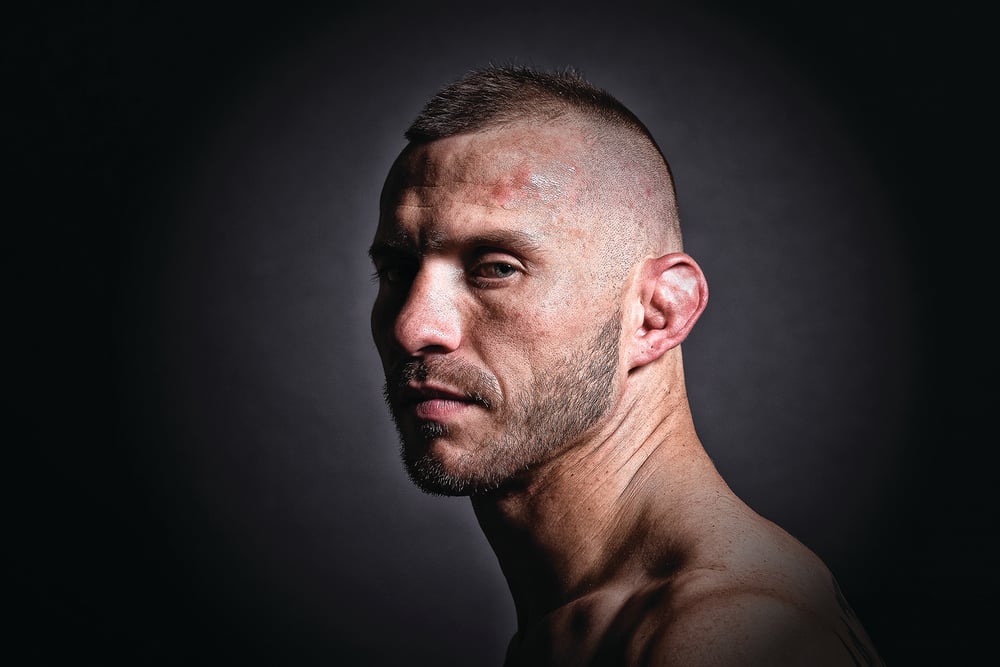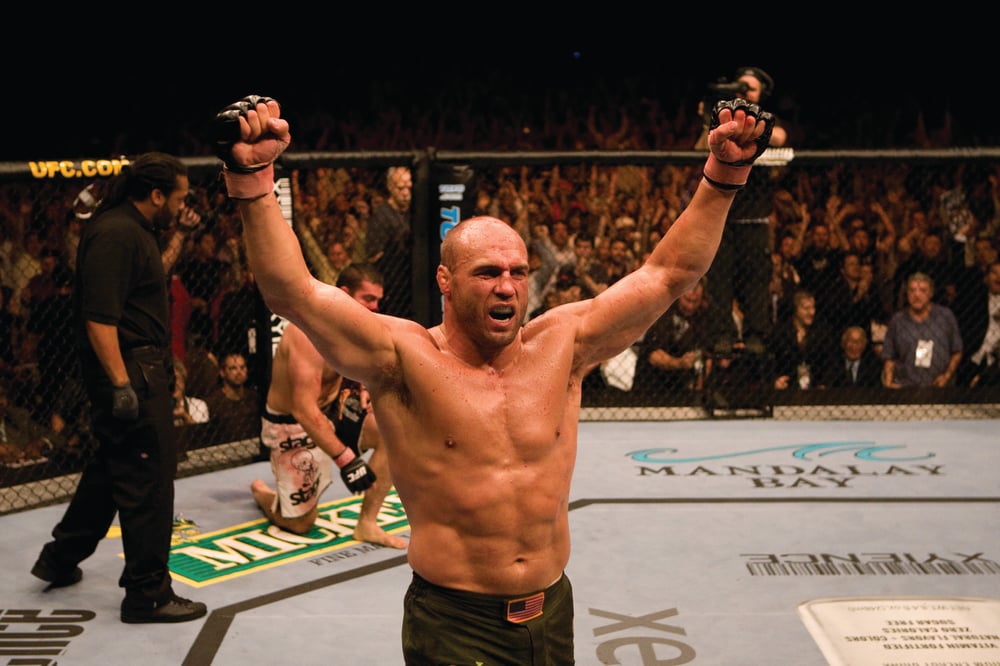
Issue 210
October 2024
Ray Klerck unpacks whether a Masters League in MMA could satisfy fans' nostalgia or whether the potential risks make us reconsider if it’s worth it.
Athletes have a tiny little life window where they’re at their peak, but the public’s expectations can try to hold open that window. Should these fighters ride off into the sunset, retiring on the fruits of their previous labors so they can be rolled out on special occasions to remind us of the good ole days? The answers aren’t always straightforward, especially once a fighter nudges the 40 mark. It's an age where you’re not old, have amassed a devoted fan base, and are arguably better in many respects but don’t have a whole career ahead of you. They’ve been around the block so many times that they paved it and have a genius-level fight IQ, but the tendons and ligaments holding their body together perhaps aren’t quite as willing. Regardless of their physical condition, the desire to fight clearly never leaves anyone once they taste the bright light. Donald Cerrone recently announced that despite retiring in 2022, he wants two more UFC fights after openly admitting that he’s enjoyed the bounty of not being a drug-tested athlete while retired.

You can read between the lines and perhaps the benefits of fringe recovery procedures are something all athletes deserve at some point to reset the body back to its factory settings. Doing a ton of steroids then having a break and coming back also doesn't seem fair to anyone else. “Love him, hate that,” said Dana White about Cerrone’s intentions, so don’t place your bets just yet, but Dana’s also not putting older fighter out to pasture.
THE GROWING RANKS
When Chris Weidman steps into the Octagon at UFC 309, the 40-year-old will join the ranks of fighters pushing the age limit in the cage. The sport has seen this trend before, with aging legends like Andre Arlovski (45) and Randy Couture drawing the thumping crowds well into their late forties, prompting the question: Should MMA embrace a masters league?

On the one hand, this hypothetical league could offer aging fighters an arena tailored to their unique needs while potentially offsetting the risks. It’s an opportunity for the fans to keep supporting the fighters they’ve grown to love. However, it might also raise significant concerns about long-term health and safety. Unlike other sports, MMA doesn't yet have a separate division for older athletes. Tennis and golf, for example, offer some kind of seniors’ leagues where veterans can continue competing without the heightened pressures of their younger counterparts. Could a similar model work in MMA? Well, while Weidman’s upcoming fight may seem routine, for older fighters, every bout carries a risk that’s been notched up a little. Studies show that even retired fighters exhibit concerning signs of long-term brain damage. Research from the American Academy of Neurology suggests that boxers and MMA fighters carry markers of brain injury in their blood—specifically neurofilament light chain and tau proteins—which can indicate ongoing damage even after retirement. And while these proteins provide clues, the real danger lies in the fact that aging fighters might be less resilient to repetitive trauma. Does any fight organization want that risk on their insurance bill or the PR nightmare that could implode were something to happen? Perhaps not, even though there will always be outliers like Jim Miller to challenge the status quo.
COULD A MASTERS LEAGUE REDUCE BRAIN TRAUMA?
MMA may not want the heat that boxing has in terms of longevity because retired boxers die earlier than almost any other sportsperson, according to research. That said, George Foreman was at his best when he was 46 years old. However, most of MMA’s legends are still the kind of guys you want to have a beer with because they’re ambassadors of the sport. There’s no denying that time away from head punches can do the body a world of good. There’s emerging evidence that older fighters may experience a degree of cognitive recovery after stepping away from the sport. A 2022 study published in Neurology, found that retired fighters improved verbal memory and motor skills over three years as their brains rebounded from the relentless punishment of combat sports. However, stepping back into competitive fighting—especially in a MMA Masters League—could very quickly counteract these gains and exacerbate issues like chronic traumatic encephalopathy (CTE), which remains a serious concern for all MMA fighters.
Simply put, the dangers of earning a living from combat sports don’t fade as you age. A decade-long study from the University of Alberta highlights that while MMA fighters suffer more frequent but less severe injuries than boxers, they are still at risk of significant head trauma, no matter how old they are. Given the brutal nature of both sports, a masters league might need some really stringent safety protocols in place to address these elevated risks. Still, it’s unlikely that protective headgear would be popular with fans. With all the side hustle promotions for modified ways of fighting, these are a lot more dangerous than you might believe. The concern isn’t just hot air. SlapFighting - a sport that has seen a massive spike in popularity - has shown a staggering 80% concussion rate, according to research from the University of Pittsburgh. Even if a slap seems tamer than a punch, it’s not, and that’s a metaphor for the risks around all combat sports regardless of how they’re modified.
UNANSWERED QUESTIONS ABOUT LONG-TERM HEALTH
Despite the growing popularity of MMA, it’s one of the many sports that have lacked consistent protocols for handling head injuries. This leaves some questions about the long-term impact of repeated trauma unanswered. A 2017 study from St. Michael's Hospital pointed out that at the time, there was no universally accepted method for tracking concussions or other head injuries in MMA. Fortunately, in 2021, the UFC created an outline of the procedures for returning to training and fighting if a fighter has suffered a concussion. This has taken the proper steps to gather precise data, but that’s still in its infancy from a quantitative data perspective. With this in mind, creating a league for older fighters becomes even more complex thanks to the long-term risks around what we don’t know. How can MMA ensure adequate medical oversight for aging fighters? They probably can’t, especially when dealing with older athletes who might become more vulnerable to chronic injuries if they’re fighting regularly in an age-specific league.
WOULD IT BE WORTH THE RISK?
The allure and money on offer around watching legendary fighters continue their careers is undeniable. Sadly, it may become a battle to see who ages the best rather than who fights the best. Former champions may fail to reach the heights they reached in their youth, while undercard mainstays may get their best-ever results in the twilight of their careers.

For indications of this, just look at what Glover Teixeira and Randy Couture accomplished in their 40s. Therein lies the unknown. Yet, with numerous studies consistently pointing to long-term health risks, it’s clear why any masters league would need to prioritize safety above all else. And where’s the fun in that for the fans? Enhanced medical protocols, more frequent testing, and possible restrictions on high-impact moves might help make the idea feasible. Without these safeguards, the price of keeping aging fighters in the cage might be a cost too steep for their well-being and may be something the fans just don’t want to see. Perhaps we want to remember the greats for their finest moments rather than deciding that more juice can be squeezed from the shriveled lemon rind, only to find that the final acidic spritz in the eye costs a beloved fighter their health and legacy. There’s no doubt that a masters league would certainly pack stadiums from a sentimental perspective. However, it’s worth asking if a few more rounds of applause are worth it. Sometimes, it’s best not to give the people what they want because nostalgia isn’t what it used to be. If Dana hasn’t done it yet, you can bet he’s smart enough to know there’s more than one good reason to keep it that way.










